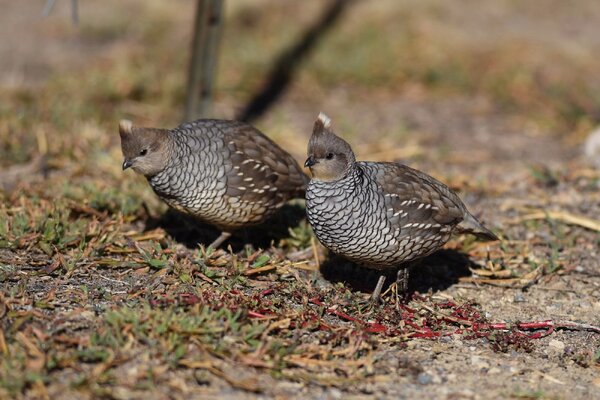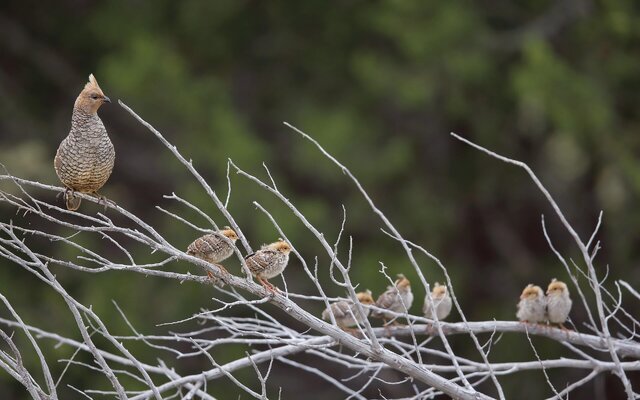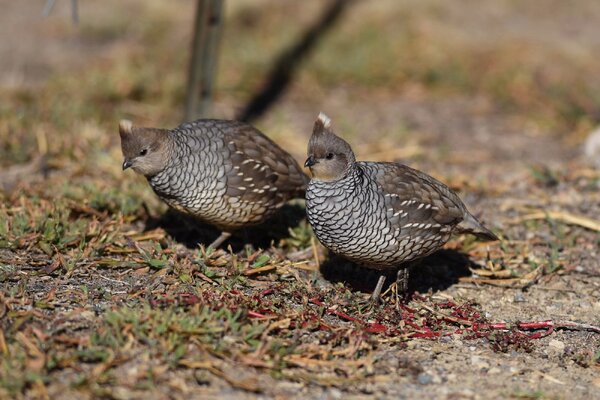The Scaly Quail (Excalfactoria chinensis)
Intro:
The Scaly Quail (Excalfactoria chinensis) is a small ground-dwelling bird with a unique appearance characterized by its scaly patterned plumage.

Physical Characteristics:
With an average length of about five to six inches and weighing around 1.5 ounces, the Scaly Quail is a compact species, perfect for navigating through dense vegetation.

Habitat:
This species can be found in various habitats, including grasslands, scrublands, and open woodlands across south-central Arizona, northern New Mexico, east-central Colorado, and southwestern Kansas south through western Oklahoma and western and central Texas into Mexico to northeastern Jalisco

Camouflage:
The Scaly Quail is known for its remarkable camouflaging skills, blending effortlessly into its surroundings due to its intricate feather pattern resembling scales. This adaptation helps it avoid potential predators and maintain its safety.
Flight Abilities
Despite its small size, the Scaly Quail possesses a strong flight capability, enabling it to escape from danger when necessary. It has short, rounded wings that allow for quick and agile movements. However they tend to only fly as a last resort. They usually choose booking it before flying most of the time, making it infinitly harder to hunt them!
Diet:
In terms of diet, the Scaly Quail is primarily omnivorous, feeding on a variety of food sources such as seeds, insects, small invertebrates, and occasionally vegetation.
Breeding Behaviors:
Breeding behaviors of the Scaly Quail are notable, as they engage in monogamous relationships during the mating season. Females construct shallow nest depressions on the ground, and both parents care for the eggs and raise the offspring together.

Vocalizations:
The vocalizations of the Scaly Quail consist of a range of soft whistling and chirping sounds. Males often use these calls to attract mates and establish territorial boundaries.
Social Behavior:
The Scaly Quail exhibits a relatively simple social structure. They typically form monogamous pair bonds during the breeding season, with both parents participating in nest-building, incubating eggs, and rearing offspring. Outside of the breeding season, they may gather in small flocks or forage individually, exhibiting limited social interactions beyond their immediate family unit.
(When they sleep together it looks like someone glued their tails together)

(Photo is from Pinterest)
Conservation Efforts:
Conservation efforts are underway to preserve the Scaly Quail's natural habitats and ensure their long-term survival. Deforestation, habitat loss, and hunting pose significant threats to their population, leading to the establishment of protected areas and conservation programs to mitigate these risks. This is why it's very common for researchets to keep track of individual birds by giving them legbands as seen in this photo! Each legbands is unique and has the birds individual info on it. This way researchers can know who is who and so hunters can know what birds they should not go after.

(Photos credits to All About Birds, Cornell Lab)
The Scaly Quail (Excalfactoria chinensis) is a small ground-dwelling bird with a unique appearance characterized by its scaly patterned plumage.
Physical Characteristics:
With an average length of about five to six inches and weighing around 1.5 ounces, the Scaly Quail is a compact species, perfect for navigating through dense vegetation.
Habitat:
This species can be found in various habitats, including grasslands, scrublands, and open woodlands across south-central Arizona, northern New Mexico, east-central Colorado, and southwestern Kansas south through western Oklahoma and western and central Texas into Mexico to northeastern Jalisco
Camouflage:
The Scaly Quail is known for its remarkable camouflaging skills, blending effortlessly into its surroundings due to its intricate feather pattern resembling scales. This adaptation helps it avoid potential predators and maintain its safety.
Flight Abilities
Despite its small size, the Scaly Quail possesses a strong flight capability, enabling it to escape from danger when necessary. It has short, rounded wings that allow for quick and agile movements. However they tend to only fly as a last resort. They usually choose booking it before flying most of the time, making it infinitly harder to hunt them!
Diet:
In terms of diet, the Scaly Quail is primarily omnivorous, feeding on a variety of food sources such as seeds, insects, small invertebrates, and occasionally vegetation.
Breeding Behaviors:
Breeding behaviors of the Scaly Quail are notable, as they engage in monogamous relationships during the mating season. Females construct shallow nest depressions on the ground, and both parents care for the eggs and raise the offspring together.
Vocalizations:
The vocalizations of the Scaly Quail consist of a range of soft whistling and chirping sounds. Males often use these calls to attract mates and establish territorial boundaries.
Social Behavior:
The Scaly Quail exhibits a relatively simple social structure. They typically form monogamous pair bonds during the breeding season, with both parents participating in nest-building, incubating eggs, and rearing offspring. Outside of the breeding season, they may gather in small flocks or forage individually, exhibiting limited social interactions beyond their immediate family unit.
(When they sleep together it looks like someone glued their tails together)
(Photo is from Pinterest)
Conservation Efforts:
Conservation efforts are underway to preserve the Scaly Quail's natural habitats and ensure their long-term survival. Deforestation, habitat loss, and hunting pose significant threats to their population, leading to the establishment of protected areas and conservation programs to mitigate these risks. This is why it's very common for researchets to keep track of individual birds by giving them legbands as seen in this photo! Each legbands is unique and has the birds individual info on it. This way researchers can know who is who and so hunters can know what birds they should not go after.
(Photos credits to All About Birds, Cornell Lab)




